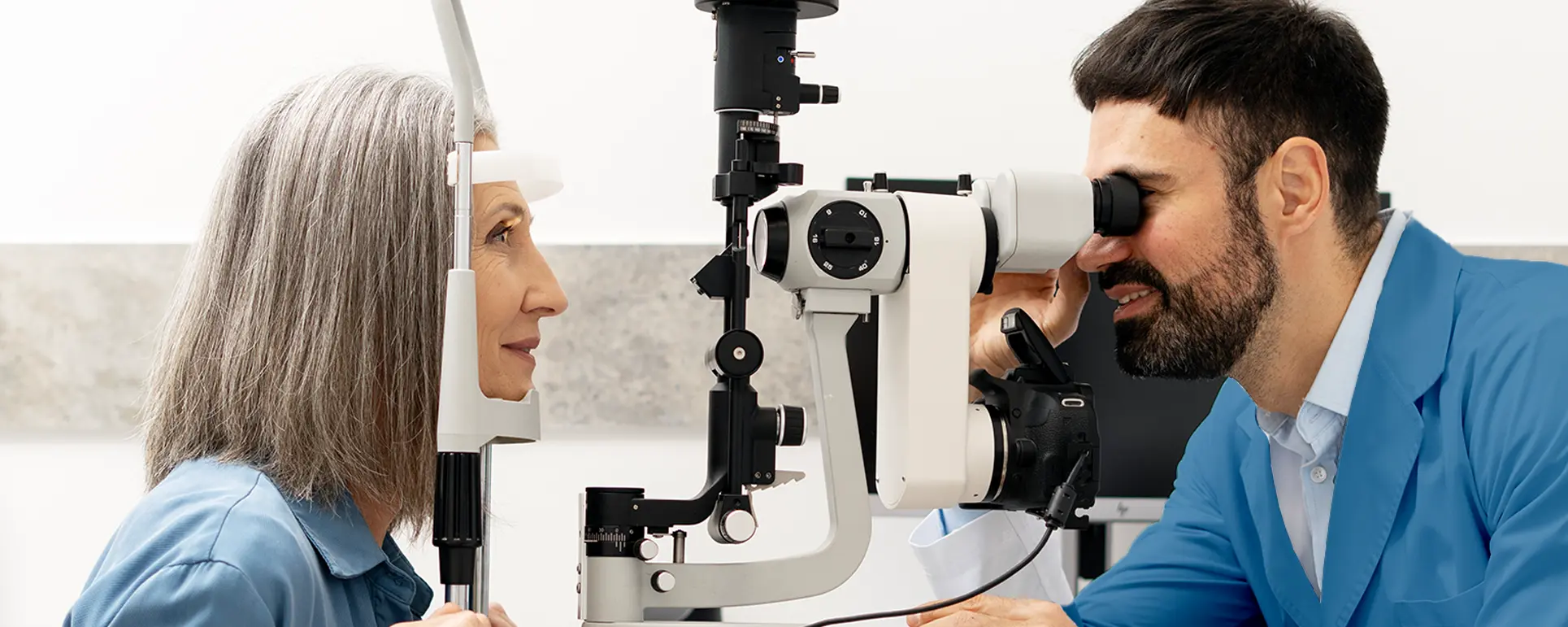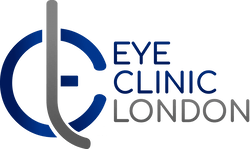Is LASEK Eye Surgery Painful?

If you’re considering laser vision correction, one of the biggest questions on your mind is probably “Will it hurt?”. It’s completely normal to feel nervous about anything involving your eyes, but the good news is that modern laser surgeries like LASEK are designed with your comfort in mind.
While LASEK has a slightly longer recovery compared to LASIK, the level of pain or discomfort you might experience is usually mild and temporary. In this article, I’ll walk you through exactly what to expect during and after the procedure, explain the pain management methods your surgeon will use, and share real-world insights into how most patients describe their recovery.
Most people find that any discomfort is manageable and short-lived. You might feel a scratchy or gritty sensation in your eyes for a few days, and your vision may be a little blurry at first. The key is knowing what’s normal and what’s not, so you can feel confident and prepared. By understanding the recovery process and following your surgeon’s instructions, you’ll be able to navigate those first few days smoothly and get back to your daily routine with minimal stress.
Understanding LASEK Eye Surgery

Before we talk about what you might feel during and after the procedure, it helps to understand exactly what LASEK involves.
LASEK, or Laser-Assisted Sub-Epithelial Keratectomy, is a type of laser eye surgery designed to correct short-sightedness, long-sightedness, and astigmatism. Your surgeon might recommend it if you:
- Have thinner corneas and aren’t a good candidate for LASIK
- Have certain job or lifestyle considerations that make flap-based procedures riskier
- Want to avoid the small risks associated with corneal flaps
Unlike LASIK, where a flap is created in the cornea, LASEK gently loosens the top layer of your cornea (called the epithelium) using a mild alcohol solution. This layer is carefully moved aside while the laser reshapes the cornea underneath, and then it’s placed back to heal naturally.
Because this surface layer needs time to regenerate, your recovery is a little longer than LASIK and may involve mild irritation, a scratchy feeling, or light sensitivity for a few days. You might notice blurry vision at first, or that your eyes water more than usual. These sensations are normal and usually settle as your eyes adjust.
Another important point is that LASEK allows for more precise correction in certain cases. If you have a thin cornea or specific eye conditions, this procedure can be safer than flap-based alternatives. Your surgeon will tailor the treatment to your eyes, ensuring that you get the best possible outcome while keeping your comfort and safety in mind.
Is LASEK Painful During the Procedure?
Most people are surprised to learn that LASEK surgery itself is completely pain-free. Here’s why:
- Numbing Eye Drops
Before your procedure begins, your surgeon will apply anaesthetic eye drops to completely numb the surface of your eyes. You’ll stay awake during the process, but you won’t feel pain just some gentle pressure or movement. The drops work quickly and make the procedure surprisingly comfortable. - Mild Sensation of Pressure
Some patients mention feeling a slight pressure or vibration during the laser phase, but it isn’t painful. The entire procedure only takes about 10–15 minutes per eye, and the actual laser application is usually under a minute. You might notice a faint smell or a warm feeling from the laser, but these sensations are completely normal and harmless. - No Needles or General Anaesthesia
Because the process only uses numbing drops, there are no injections, stitches, or general anaesthesia involved. This keeps the experience calm and controlled, and most patients find it much less intimidating than they expected. - Support and Guidance Throughout
Your surgeon and the surgical team will guide you through every step, explaining what you might feel and keeping you relaxed. Knowing exactly what’s happening can make a big difference instead of worrying about pain, you can focus on staying comfortable and following instructions.
So, during the surgery itself, you shouldn’t feel pain at all just awareness that something is happening, like mild pressure, cool air, or a brief sensation from the laser. Most patients are amazed at how quick and easy the procedure feels once the numbing drops take effect.
What Happens Right After Surgery?
Immediately after your LASEK procedure, your surgeon will place protective contact lenses, also called bandage lenses, over your eyes.
These lenses are there to:
- Shield your cornea while the epithelium (the surface layer of your eye) regenerates
- Reduce friction and irritation, so blinking doesn’t feel uncomfortable
- Maintain comfort during the first few days of healing
Once the numbing drops wear off, you may start to notice some mild sensations in your eyes. These are completely normal and usually temporary. You might experience:
- Mild stinging or burning, similar to the feeling of shampoo accidentally getting in your eyes
- Watery eyes or increased light sensitivity, making sunglasses handy if you step outside
- A gritty or sandy sensation, like there’s a tiny eyelash trapped in your eye
For most people, these sensations peak in the first 24–48 hours and gradually improve as your eyes begin to heal.
It’s also common to feel a bit anxious or unsure during this first day after all, your eyes are sensitive and adjusting to the changes. The good news is that your protective lenses and prescribed drops are designed to keep you comfortable, so you can focus on resting and letting your eyes recover. Many patients find that even though they notice these mild irritations, they’re still able to relax, watch TV, or read without too much trouble.
The First 72 Hours: What It Feels Like

The first few days after LASEK are usually the most uncomfortable, and that’s completely normal. This happens because your surface corneal cells are regenerating, and your eyes are adjusting to the changes from the surgery. Knowing what to expect can help you feel more prepared and confident during this stage.
Day 1–2: Mild to Moderate Discomfort
- You may feel a burning, stinging, or gritty sensation, almost like there’s sand in your eyes.
- Tearing and light sensitivity are common, so sunglasses or a dimly lit room can make you more comfortable.
- Mild swelling around the eyes can occur.
- Your vision may be blurry, and you’ll likely want to rest in a darkened room or take short naps.
During this stage, it’s normal to feel a little anxious about your vision, but remember that these sensations are temporary and expected. Using the prescribed lubricating drops regularly will help ease discomfort.
Day 3–4: Gradual Relief
- The irritation in your eyes usually starts to subside, and the gritty feeling diminishes.
- You may notice clearer vision and reduced sensitivity to light.
- Your surgeon will advise you on when it’s safe to remove the bandage lenses, which is a big step toward comfort and easier vision.
Day 5–7: Noticeable Improvement
- By now, most of the discomfort has resolved, though some mild dryness may remain.
- Your vision will continue to stabilise, and you’ll start to feel more like yourself.
- Lubricating drops are still helpful if your eyes feel dry, especially in air-conditioned or windy environments.
During this entire first week, it’s important to avoid rubbing your eyes, follow all aftercare instructions carefully, and give your eyes plenty of rest. Taking these precautions helps ensure your healing process is smooth and your vision recovers as expected.
How Pain Is Managed After LASEK
After your LASEK procedure, your surgeon will give you a personalised pain management plan to keep you comfortable while your eyes heal. The good news is that most patients find the discomfort mild and very manageable with these strategies:
- Prescription Eye Drops
- Antibiotic drops help prevent infection while your cornea heals.
- Anti-inflammatory drops reduce swelling and irritation, keeping your eyes more comfortable.
- Lubricating drops soothe dryness and support the regeneration of your surface cells, which makes blinking and reading much easier.
- Oral Pain Relief
- Over-the-counter painkillers like paracetamol or ibuprofen can help manage mild soreness.
- If needed, some patients are prescribed a slightly stronger medication for the first night to ensure a restful sleep.
- Cold Compresses
- Placing a clean, cool compress gently over your closed eyes can calm stinging and swelling.
- This is especially useful during the first 24–48 hours when irritation tends to peak.
- Rest and Darkness
- Keeping your eyes closed in a dimly lit room reduces light sensitivity and helps your eyes recover more comfortably.
- Short naps or quiet downtime are perfectly normal and encouraged during this stage.
With these strategies in place, most patients are able to manage the discomfort without major issues. The combination of eye drops, occasional oral pain relief, and rest allows your eyes to heal steadily while keeping you comfortable.
Comparing LASEK and LASIK: Pain and Recovery
If you’re trying to decide between LASEK and LASIK, it helps to understand how they differ in terms of pain, recovery, and suitability.
During the surgery itself, both procedures are virtually painless thanks to numbing eye drops. You’ll be awake, but you shouldn’t feel any discomfort just gentle pressure or awareness that something is happening.
Where they differ more is after surgery. With LASEK, you might experience mild to moderate discomfort for the first 2–3 days, including stinging, tearing, or a gritty sensation. LASIK, on the other hand, usually comes with minimal post-operative discomfort, and most patients feel comfortable almost immediately.
Recovery time also varies. After LASEK, your eyes typically feel comfortable around 1–2 weeks, depending on your healing, while LASIK patients often return to normal activities within a few days. Your vision with LASEK tends to improve gradually as the surface layer of your cornea heals, whereas LASIK usually delivers rapid vision improvement right after the procedure.
Finally, suitability is a key factor. LASEK is often recommended if you have thinner corneas or want to avoid flap-related risks, while LASIK is typically ideal for those with thicker corneas who are good candidates for a flap-based procedure.
Knowing these differences can help you decide which procedure feels right for you, factoring in comfort, recovery time, and your individual eye characteristics.
What Patients Say About LASEK Discomfort
Hearing from real patients can give you a better idea of what to expect. Most people describe the sensation after LASEK as “more irritation than actual pain.”
Here’s how some patients commonly explain it:
- “It felt like I had an eyelash stuck in my eye for a couple of days, but it wasn’t unbearable.”
- “My eyes watered a lot, but the drops helped almost immediately.”
- “I had mild stinging at night, but by day four, I was feeling fine and could go about my day comfortably.”
By the end of the first week, most patients are comfortable and back to their usual activities, often surprised at how manageable the recovery really is.
Knowing these experiences can help you set realistic expectations and feel more confident going into the procedure. If you notice similar sensations, you can be reassured that they’re normal and usually short-lived, especially if you stick to your aftercare routine.
When to Contact Your Surgeon
While mild discomfort is completely normal after LASEK, there are certain signs that mean you should get in touch with your surgeon right away. Don’t worry reaching out is common, and your clinic expects questions during recovery. You should contact them if you notice:
- Severe or worsening pain that doesn’t improve with your prescribed drops or pain relief
- A sudden decrease in vision, blurriness, or new visual disturbances
- Discharge, swelling, or redness that seems unusual or persistent
- Any signs of infection, such as increased warmth, pus, or unusual sensitivity
Your surgeon will also schedule routine follow-ups to monitor your healing and make sure everything is progressing safely. These check-ins give you the opportunity to ask questions and report any concerns, helping you feel confident that your recovery is on track.
Remember, it’s always better to call and get reassurance than to wait and worry your eyes are worth the extra caution.
How to Make Recovery More Comfortable
Recovering from LASEK can be much smoother if you take a few simple steps to care for your eyes. Here’s what you can do:
- Use all prescribed eye drops exactly as directed. These drops are key to preventing infection, reducing inflammation, and keeping your eyes comfortable.
- Avoid bright lights and screens for the first few days. If you need to use a phone or computer, try dimming the brightness and taking frequent breaks.
- Don’t rub your eyes. Even though they might feel itchy or gritty, rubbing can slow healing and increase discomfort.
- Stay hydrated and use artificial tears regularly. Keeping your eyes moist helps reduce dryness and irritation.
- Wear sunglasses outdoors. Sunlight can feel harsh on sensitive eyes, so sunglasses protect them and make going outside more comfortable.
- Rest your eyes and get plenty of sleep. Giving your eyes downtime allows them to heal faster and reduces irritation.
Small steps like these can make a big difference in how comfortable you feel during the first week of recovery. By following your surgeon’s instructions and paying attention to your eyes, you can help the healing process along and feel more confident every day.
How Long Until You’re Fully Comfortable?
You might be wondering how long it takes before your eyes feel completely normal after LASEK. While everyone’s healing process is a little different, most people notice a clear pattern:
- By day 5–7, the surface cells of your cornea have mostly healed, and irritation starts to fade. You’ll likely feel much more comfortable and be able to go about your daily activities with minimal discomfort.
- By around week 2–3, most people notice their eyes feeling closer to normal, and vision clarity usually continues to improve steadily. You’ll likely see a noticeable difference compared to those first few days when your eyes were watery, gritty, or sensitive to light
- By around 3 months, your results are typically stable and permanent, giving you the sharp, clear vision you were hoping for.
Even though healing times vary from person to person, discomfort rarely lasts longer than a few days, and most people are surprised at how quickly they start to feel like themselves again. Paying attention to your aftercare routine and protecting your eyes during the early days helps speed recovery and keeps you comfortable.
Why LASEK Is Still Worth It
Even though recovery takes a bit longer, many patients especially those with thinner corneas find LASEK an ideal option because:
- It avoids corneal flap complications.
- It’s suitable for more eye shapes.
- Results are as clear and permanent as LASIK once healed.
Most importantly, pain or discomfort is temporary, while the benefits freedom from glasses or contact lenses last for years.
FAQs About LASEK Eye Surgery
- Will I feel pain during LASEK surgery?
LASEK surgery is designed to be virtually pain-free. Before the procedure begins, your surgeon will apply anaesthetic eye drops that numb the surface of your eyes. While you remain awake during the surgery, you won’t feel any pain. Some patients may notice a gentle pressure or slight movement, but these sensations are mild and temporary. The entire procedure is quick, usually taking only 10 to 15 minutes per eye. - How long does the recovery take after LASEK?
Recovery after LASEK is generally a little longer than LASIK because the top layer of the cornea needs time to regenerate. Most patients experience mild discomfort for the first two to three days, including stinging, watering, or a gritty sensation in the eyes. Vision gradually improves over the first one to two weeks, and by the end of this period, most people can resume normal daily activities comfortably. Full healing and stable results are typically achieved around three months after the procedure. - What does the first day after surgery feel like?
The first 24 to 48 hours after LASEK are when your eyes are most sensitive. It is common to feel a stinging or burning sensation similar to getting shampoo in the eyes, along with tearing and increased light sensitivity. The protective bandage lenses applied during surgery help minimise discomfort, and prescribed eye drops assist in keeping the eyes hydrated and reducing irritation. Although these sensations may cause some unease, they are normal and expected as your eyes begin to heal. - Can I manage pain at home?
Yes, pain after LASEK is typically mild and manageable with proper care. Your surgeon will provide a regimen of prescription eye drops to prevent infection, reduce inflammation, and keep the eyes comfortable. Over-the-counter painkillers such as paracetamol or ibuprofen can help alleviate any mild soreness. Using a cold compress on closed eyes can also calm stinging and swelling. Resting in a dimly lit room and avoiding activities that strain your eyes further support a smooth recovery. - When can I return to work or normal activities?
Most patients can resume light work and daily activities within three to five days, depending on individual comfort levels. It is advisable to avoid strenuous physical activities, swimming, or environments with dust or strong winds until your surgeon confirms that your eyes have healed sufficiently. Protecting your eyes during this period is essential to avoid complications and ensure a smooth recovery. - Are bandage lenses necessary?
Bandage lenses are a key part of LASEK recovery. They shield the cornea while the epithelium regenerates, helping to reduce friction from blinking and maintain comfort. Patients usually wear these lenses for three to five days, depending on the healing rate. Removing them too early can cause irritation and slow the healing process, which is why your surgeon will guide you carefully on when it is safe to take them out. - Is LASEK suitable for everyone?
LASEK is not suitable for every patient, but it is often recommended for those with thinner corneas who cannot undergo LASIK safely. It is also preferred for patients who want to avoid risks related to corneal flaps or for those with certain lifestyle or occupational needs where flap-related complications could pose problems. Your surgeon will evaluate your corneal thickness, eye health, and lifestyle requirements to determine whether LASEK is the best option for you. - How does LASEK compare with LASIK in terms of pain?
Both LASEK and LASIK are virtually painless during the procedure because of the numbing eye drops used. The main difference lies in the recovery period. After LASEK, mild to moderate discomfort is common for the first two to three days, whereas LASIK patients usually experience very little post-operative discomfort and enjoy a quicker visual recovery. LASEK recovery takes slightly longer, but it may be safer for patients with thin corneas or certain eye conditions. - What should I watch for that requires contacting my surgeon?
While mild discomfort is normal, there are signs that indicate you should contact your surgeon immediately. Severe or worsening pain that does not respond to prescribed drops or medications, sudden changes in vision, new visual disturbances, discharge, unusual redness or swelling, and any signs of infection such as pus or warmth around the eye should be addressed without delay. Your surgeon expects patients to reach out with concerns, and early intervention ensures safe recovery. - Can LASEK results last a lifetime?
Yes, LASEK results are generally long-lasting. Once the cornea heals completely, the changes made by the laser are stable, giving you clear vision for many years. Most patients enjoy significant freedom from glasses or contact lenses. Proper follow-up care, protection from eye injuries, and adherence to your surgeon’s advice during the healing period help maintain the benefits of the surgery for the long term.
Final Thoughts: Comfort, Care, and Confidence
Deciding between LASIK and LASEK ultimately comes down to your eyes, your lifestyle, and how you feel about the recovery process. Both procedures are safe and effective ways to reduce or even eliminate your reliance on glasses or contact lenses. LASIK provides faster visual recovery and minimal initial discomfort, while LASEK is often a safer choice if you have thinner corneas or want to avoid flap-related complications, making it suitable for more active lifestyles or higher prescriptions.
During your recovery, it’s essential to follow your surgeon’s instructions, protect your eyes, and attend all follow-up appointments. Knowing what to expect, understanding the differences between the procedures, and setting realistic expectations can help you have a smoother healing process and enjoy long-lasting clear vision. If you’re considering Lasek surgery in London, you can reach out to us at Eye Clinic London to discuss your options and book a consultation.
References:
- Kuryan, J., 2017. Laser‐assisted subepithelial keratectomy (LASEK) versus laser in situ keratomileusis (LASIK): A randomized controlled trial. Journal of Cataract & Refractive Surgery, 43(3), pp. 376-383. Available at: https://pmc.ncbi.nlm.nih.gov/articles/PMC5408355/
- Taneri, S., Zieske, J.D. and Azar, D.T., 2004. Evolution, techniques, clinical outcomes, and pathophysiology of LASEK: Review of the literature. Survey of Ophthalmology, 49(5), pp. 513-533. Available at: https://www.sciencedirect.com/science/article/abs/pii/S0039625704001353
- Azar, D.T., 2012. Wound healing after keratorefractive surgery. Survey of Ophthalmology, 57(6), pp. 478-493. Available at: https://pmc.ncbi.nlm.nih.gov/articles/PMC3682490/
- Steigleman, W.A., 2023. Management of pain after photorefractive keratectomy. American Journal of Ophthalmology, 246, pp. 1-9. Available at: https://www.aaojournal.org/article/S0161-6420(22)00588-7/fulltext
- Reilly, C.D., 2010. PRK vs LASEK vs Epi-LASIK: A comparison of corneal haze, postoperative pain, and visual recovery in moderate to high myopia. Nepalese Journal of Ophthalmology, 2(2), pp. 97-104. Available at: https://www.nepjol.info/index.php/NEPJOPH/article/view/3715

